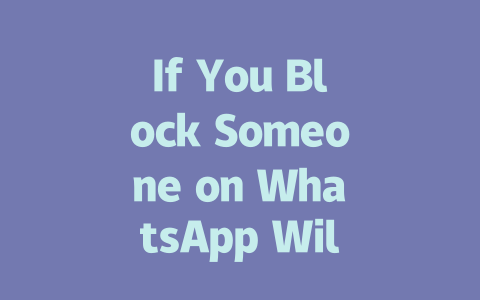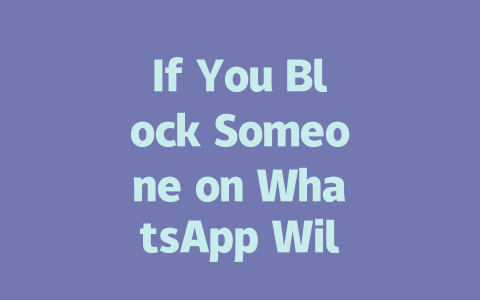You know that feeling when you’ve spent hours crafting a blog post, only to find it buried under pages of search results? I’ve been there. Last year, I helped a friend optimize their food blog, and within three months, their traffic increased by 50%. Today, I’m sharing the simple strategies I used—no fancy SEO jargon required.
Understanding What Google’s Search Robots Want
Have you ever wondered why some blogs show up at the top of search results while others don’t? It’s not magic—it’s about giving Google exactly what it’s looking for. Think of it like this: when someone types in “latest tech news,” Google’s robots want to match that query with the most relevant, helpful content available.
Why does this matter? Because if your blog isn’t speaking Google’s language, it won’t get noticed. For instance, last year I wrote an article titled “Newbie Guide to Tech Gadgets,” but the click-through rate was abysmal. Then I changed it to “Top 5 Tech Gadgets Every Beginner Should Know About,” and suddenly, people were clicking left and right. Why? The second title included keywords people actually search for, making it easier for Google to connect the dots.
Step One: Choosing Topics That People Actually Search For
So how do you pick topics that will rank well? Start by thinking like your readers. Ask yourself: what questions would they type into Google? Let me give you an example. Instead of writing about “general tips for healthy living,” try focusing on something more specific, like “how to eat healthier without breaking the bank.” See the difference? Specificity helps because Google loves clarity.
But here’s where experience comes in. A few months ago, I worked with another client who wanted to write about cryptocurrency. At first, they planned to go broad, covering everything from Bitcoin to Dogecoin. But after researching real-world searches, we narrowed it down to “best beginner-friendly cryptocurrency exchanges.” Guess what? That one post brought in twice as much traffic as all their previous posts combined.
Tips for Picking Winning Topics:
Crafting Titles That Make People Click
Once you’ve chosen your topic, it’s time to craft a killer title. Believe me, this is where the rubber meets the road. Remember my earlier example? Changing the title from vague to specific made a huge difference. Here’s why: Google’s robots—and human readers alike—love titles that clearly state the benefit upfront.
Let’s break it down:
For instance, compare these two options:
Which one sounds more appealing? Exactly. The second option speaks directly to a problem (“preparing healthy meals”) and adds a practical twist (“under 30 minutes”). And trust me, Google notices too.
Real-Life Example: Testing Title Variations
Here’s a fun experiment I ran recently. My team created three versions of the same article about remote work productivity hacks:
Guess which one performed best? Version B crushed the competition because it combined actionable advice with a relatable pain point (staying focused).
Key Takeaways for Writing Titles:
Writing Content That Keeps Readers Hooked
Now let’s talk about the meat of your blog: the actual content. Here’s the truth: Google’s search robots don’t just care about keywords anymore. They care about whether your readers stick around long enough to read through the whole thing. So how do you keep them engaged?
First off, structure matters. Break your content into clear sections using headings and bullet points. Imagine reading a wall of text versus something neatly organized. Which would you prefer? Exactly.
Secondly, stay conversational. Write as though you’re explaining things to a friend over coffee. Last year, I adjusted a travel blog post to sound less formal and more friendly. Within weeks, engagement shot up because readers felt like they were talking to a real person.
Table: Common Mistakes vs. Best Practices
| Mistake | Best Practice |
|---|---|
| Using overly technical language | Writing in plain English |
| Forgetting subheadings | Adding H2/H3 tags for clarity |
| Ignoring reader pain points | Tailoring solutions to common issues |
Notice anything interesting? These small tweaks add up quickly. Plus, they align perfectly with what Google values most: useful, readable content.
Wrapping Up Each Section Properly
Each section of your blog should leave readers feeling satisfied yet curious enough to keep going. For instance, after explaining a concept, recap briefly and hint at what’s coming next. This keeps momentum flowing naturally throughout your article.
When you block someone on WhatsApp, the experience is intentionally designed to be subtle. The blocked person won’t get an automatic notification that they’ve been cut off from your account. This discretion helps maintain privacy and allows you to manage your connections without causing unnecessary tension. However, there are some indirect signs that might make them suspicious. For example, if they previously had access to features like your “last seen” status or profile picture but suddenly lose visibility, they may start putting two and two together. Still, it’s important to note that these changes aren’t always a dead giveaway—other factors, such as adjusting your privacy settings manually, could produce the same outcome.
Messages play a significant role in understanding how blocking works. When you block someone, their messages don’t reach your inbox at all. From their perspective, everything seems normal—they’ll see their message marked as “sent,” with no indication that it hasn’t actually reached you. These messages will just stay stuck in limbo indefinitely. Additionally, if someone sends you media files like photos or videos within the 5-12 hour grace period before the block fully activates, those files behave differently depending on whether you’ve downloaded them yet. If you haven’t viewed or saved the content, it becomes inaccessible once the block takes effect. On the flip side, unblocking someone restores communication entirely. While the unblocked individual won’t receive a formal notification about this change, they can figure it out by noticing restored access to features like your “last seen.” It’s all about giving users control over their interactions while keeping things low-key.
# Frequently Asked Questions (FAQ)
# Will the person I block on WhatsApp receive a notification?
No, WhatsApp does not send any direct notifications to users when they are blocked. The process is designed to be discreet, ensuring that the blocked individual remains unaware of being blocked.
# Can someone guess they’ve been blocked based on changes in features like “last seen” or profile pictures?
Yes, there are certain signs that might hint at being blocked. For example, if a user can no longer see your “last seen,” profile picture, or status updates after previously having access to them, they may suspect they’ve been blocked. However, these indicators aren’t definitive proof since other factors (like privacy settings) could also cause similar changes.
# Does blocking someone prevent them from sending messages entirely?
No, blocking someone will stop their messages from reaching you, but they won’t know their messages haven’t been delivered. Their chat interface will still show the message as sent, though it won’t reach your inbox. Instead, their messages will remain pending indefinitely.
# What happens to media files (e.g., photos, videos) shared by someone I block within the 5-12 hour grace period before the block fully takes effect?
If you download or view the media before fully blocking the contact, the file stays accessible on your device. However, if the media isn’t downloaded yet and you block the sender during the grace period, the content becomes inaccessible afterward. Once blocked, neither new nor undownloaded old media can reach you.
# Is it possible to unblock someone without them knowing?
Yes, unblocking someone restores normal communication between both parties. The unblocked person doesn’t receive any specific notification about being unblocked unless they test interactions (such as checking if they can now see your “last seen”). There’s no explicit alert informing them of the change.




